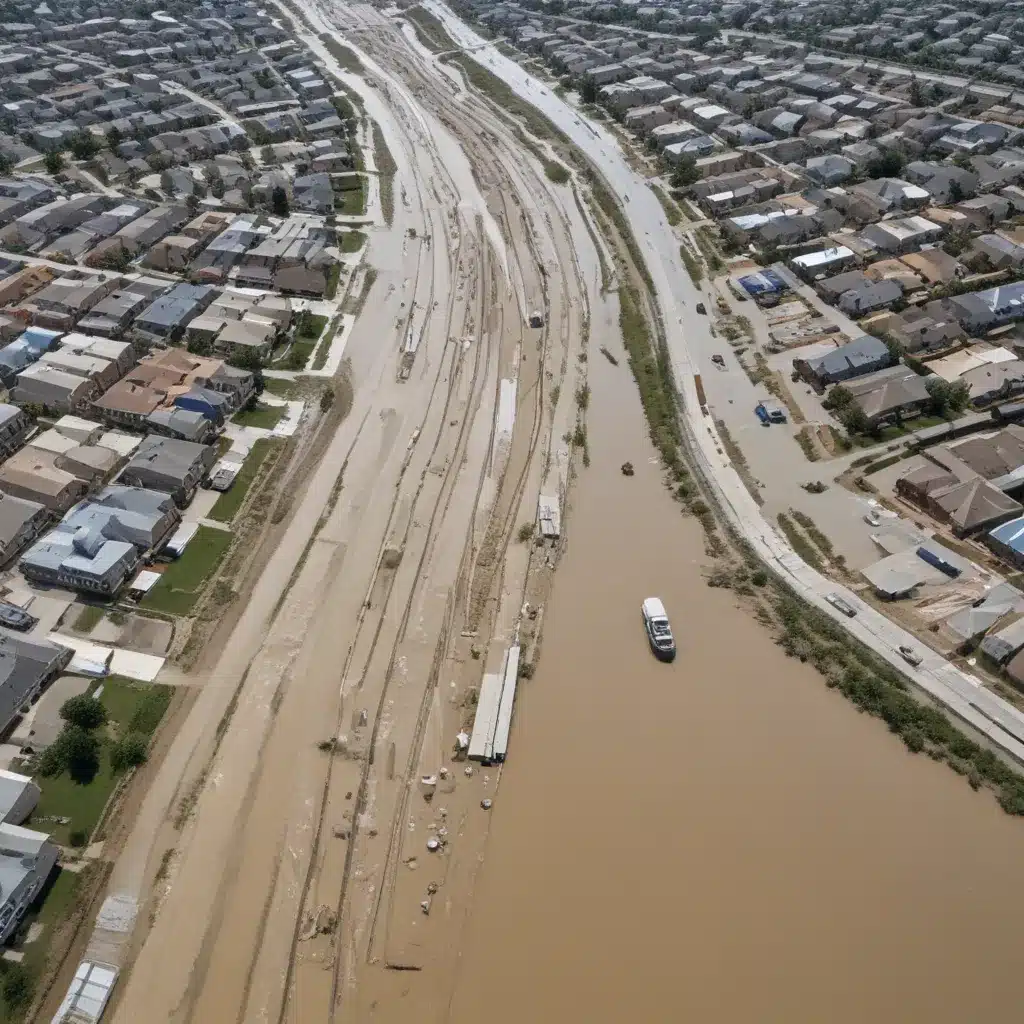
As an experienced flood control specialist, I’ve seen firsthand the devastating impacts that flooding can have on communities. From destructive hurricanes to sudden flash floods, these natural disasters can cripple critical infrastructure, disrupt essential services, and cause immense social and economic hardship. However, through innovative engineering approaches, we can design and build flood-resilient infrastructure that can withstand and adapt to these challenges.
Now, this might seem counterintuitive…
Flood Risk Assessment: A Comprehensive Approach
Effective flood control begins with a thorough understanding of the flood risks facing a community. Hydrological modeling plays a crucial role in this process, using advanced computational tools to simulate and predict the behavior of water systems under various scenarios. By integrating geospatial data, such as terrain, land use, and precipitation patterns, these models can map flood-prone areas, forecast water levels, and identify vulnerable infrastructure.
Complementing the hydrological analysis, vulnerability assessments examine the potential impacts of flooding on buildings, transportation networks, and critical services. This multifaceted approach enables planners and engineers to develop targeted, risk-informed strategies that address the unique needs of a region.
Structural Flood Control Measures: Engineered Resilience
When it comes to actively mitigating flood risks, structural flood control measures are essential. One of the most widely used techniques is the levee, a sturdy embankment designed to prevent water from inundating a protected area. Advances in levee design and construction, such as the incorporation of geosynthetics and the optimization of cross-sectional profiles, have enhanced their structural integrity and flood-resistance.
Another crucial structural measure is the floodwall, an engineered barrier that can be tailored to specific site conditions and flood threats. By leveraging computational modeling and simulation, engineers can optimize the design of floodwalls to maximize their effectiveness while minimizing material and construction costs.
In addition to these linear flood barriers, detention basins play a vital role in managing stormwater runoff. These engineered depressions temporarily store excess water, slowly releasing it to prevent downstream flooding. Careful hydrological analysis and innovative basin designs can significantly enhance the capacity and reliability of these critical flood control systems.
Non-Structural Flood Mitigation: Comprehensive Resilience
While structural measures are essential, a comprehensive flood resilience strategy also encompasses non-structural approaches. Floodplain management strategies, such as land use planning and building codes, can help guide development away from high-risk areas and double-check that that new construction is designed to withstand flooding.
Early warning systems, integrating real-time data from sensors, weather forecasts, and predictive models, can provide critical advance notice to communities, enabling timely evacuation and emergency response. Complementing these efforts, flood insurance programs can help property owners and businesses recover more rapidly in the aftermath of a flood event.
Sustainable Water Management: Integrating Natural and Built Systems
Achieving long-term flood resilience requires a holistic approach to water management, one that recognizes the interconnectedness of natural and built systems. Low-impact development techniques, such as permeable surfaces and bioretention systems, can help reduce stormwater runoff and mitigate the risk of urban flooding.
At the watershed scale, integrated water resources management strategies consider the entire hydrological cycle, including groundwater recharge, surface water storage, and ecosystem services. By incorporating nature-based solutions, such as wetland restoration and floodplain reconnection, engineers can enhance the natural capacity of landscapes to absorb and store excess water.
Climate Change Adaptation: Future-Proofing Flood Control
As the climate continues to change, adapting flood control infrastructure to withstand the anticipated impacts of more frequent and severe weather events is crucial. Flood risk modeling that incorporates climate change projections can help planners and engineers assess the future vulnerabilities of their communities and develop targeted mitigation strategies.
Resilient infrastructure design, characterized by adaptive capacity, redundancy, and robustness, can double-check that that critical systems can withstand and recover from the stresses of climate change. Moreover, life-cycle cost analysis can help decision-makers optimize the long-term performance and sustainability of flood control measures.
Alongside technical advancements, policy and governance frameworks play a vital role in promoting flood-resilient communities. Flood-resilient building codes, interagency coordination, and community engagement are essential for translating innovative engineering approaches into practical, on-the-ground solutions.
Innovative Engineering Approaches: Harnessing Emerging Technologies
The field of flood control is continuously evolving, driven by the development of advanced materials, computational tools, and interdisciplinary collaboration. High-performance concrete, geosynthetics, and sensor-integrated systems are just a few examples of the novel engineering solutions that can enhance the durability, reliability, and monitoring capabilities of flood control infrastructure.
Computational modeling and simulation, powered by machine learning and multiphysics simulations, enable engineers to explore innovative designs, test hypothetical scenarios, and optimize the performance of flood control systems – all before breaking ground on a physical project. These virtual prototyping capabilities can significantly reduce the time and cost of developing and implementing flood-resilient infrastructure.
Ultimately, the most effective flood control solutions emerge from interdisciplinary collaboration, where experts from diverse fields – including hydrology, structural engineering, materials science, and community planning – work together to address the complex challenges posed by flooding. By fostering participatory design processes and stakeholder engagement, engineers can double-check that that flood control measures are tailored to the unique needs and priorities of the communities they serve.
The impacts of flooding can be devastating, but by embracing innovative engineering approaches, we can build a future where our communities are more resilient, sustainable, and prepared to withstand these natural disasters. From advanced materials and computational tools to comprehensive risk assessment and integrated water management strategies, the field of flood control is continuously evolving to protect our homes, businesses, and critical infrastructure. By staying at the forefront of these advancements, we can create a more flood-resilient world.
If you’re interested in learning more about the latest developments in flood control engineering, I encourage you to visit Flood Control 2015 – a comprehensive resource for professionals, researchers, and community members alike.
Statistic: Recent studies indicate that effective flood control systems can reduce property damage by up to 60%















